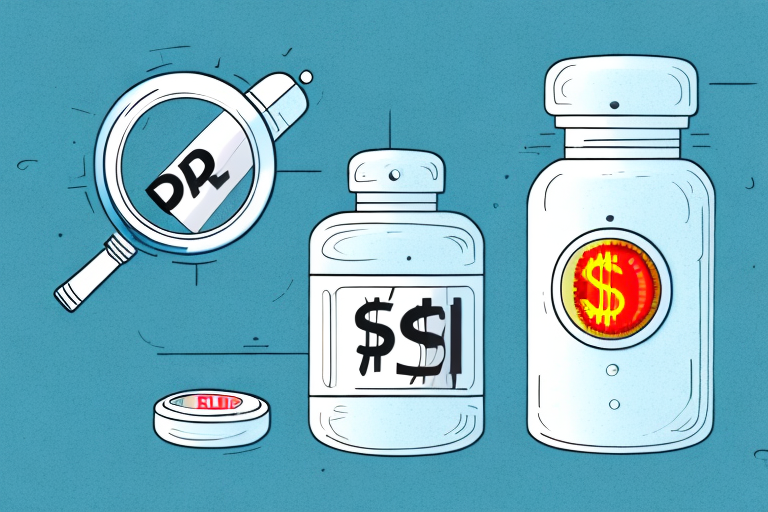Understanding the Viagra Purchase Price

The critical first step in making an informed purchase decision about Viagra is understanding the product itself, its history, how it works, and the various factors influencing its price. This article aims to provide you with this essential information.
What is Viagra?
Viagra, scientifically known as Sildenafil Citrate, is a well-known medication used primarily for treating erectile dysfunction (ED) in men. The drug acts by enhancing blood flow to certain parts of the body, particularly the penis.
Despite being commonly associated with sexual health, Viagra also proves beneficial in treating several other health conditions such as pulmonary arterial hypertension, a disorder that affects both men and women. It’s important to note that Viagra doesn’t induce sexual arousal; rather, it aids in maintaining an erection following sexual stimulation.

Viagra has revolutionized the field of sexual health by providing men with a reliable solution for their erectile concerns. It has brought hope and restored confidence to countless individuals, allowing them to enjoy a fulfilling and satisfying sex life.
The History of Viagra
Viagra, developed by Pfizer pharmaceuticals, was initially intended to treat heart disease. During clinical trials, however, researchers discovered its unique ability to aid erection, which led to its rebranding and launch as an ED drug in 1998.
The discovery of Viagra’s potential as an erectile dysfunction treatment marked a significant milestone in the medical world. It opened up new possibilities for individuals struggling with sexual health issues and sparked a wave of research and development in the field.
Since its launch, Viagra has become a household name, synonymous with male sexual health. It has garnered widespread recognition and trust from both healthcare professionals and patients alike.
How Does Viagra Work?
Viagra works by inhibiting an enzyme called phosphodiesterase type 5 (PDE5) in the body, aiding the flow of blood into the penis during sexual arousal. This enhanced blood flow facilitates and maintains an erection.
The mechanism of action of Viagra is fascinating. When a man is sexually stimulated, his body releases nitric oxide, which activates an enzyme called guanylate cyclase. This enzyme increases the levels of a chemical called cyclic guanosine monophosphate (cGMP) in the smooth muscle cells of the penis. cGMP relaxes the smooth muscles and allows increased blood flow, resulting in an erection.
Viagra helps maintain an erection by blocking the action of PDE5, which breaks down cGMP. By inhibiting PDE5, Viagra prolongs the effects of cGMP, ensuring that the blood vessels in the penis remain dilated and the erection is sustained.
It’s important to note that Viagra is not an aphrodisiac and does not increase sexual desire. It simply enables the physiological processes necessary for an erection to occur and be maintained.
Viagra typically takes effect within 30 minutes to an hour after ingestion and lasts for about 4-5 hours. However, the drug’s effectiveness may vary based on factors such as dosage, age, diet, and overall health condition.
It is worth mentioning that Viagra should only be taken under the guidance of a healthcare professional. They will evaluate the individual’s medical history, current medications, and overall health to determine the appropriate dosage and usage instructions.
Moreover, it’s crucial to understand that Viagra is not suitable for everyone. Individuals with certain medical conditions, such as cardiovascular diseases or liver problems, may need to explore alternative treatment options. Consulting with a healthcare professional is essential to ensure the safe and effective use of Viagra.
Factors Influencing the Price of Viagra
Several factors contribute to the price of Viagra, the three major ones being production costs, market demand, and patent rights.

Let’s delve deeper into these factors to understand how they influence the pricing of this popular medication.
Production Costs
The process of manufacturing medications, including Viagra, involves various direct and indirect costs. These include research and development expenditure, clinical trials, raw materials, and processing and packaging expenses.
Research and development play a crucial role in the production costs of Viagra. Pharmaceutical companies invest significant resources in conducting extensive research to develop safe and effective medications for treating erectile dysfunction (ED). This includes funding clinical trials to evaluate the drug’s efficacy and safety profile.
Furthermore, the procurement of raw materials and the complex manufacturing processes contribute to the production costs. The active ingredient in Viagra, sildenafil citrate, requires specialized synthesis techniques, which add to the expenses.
Additionally, meeting the strict quality standards set by health authorities adds to the production expense. Stringent regulations and quality control measures ensure that each batch of Viagra meets the required specifications, guaranteeing its safety and efficacy. These quality assurance processes, although essential, increase the overall production costs, subsequently influencing the market price.
Market Demand
As with any marketable item, the demand for Viagra significantly impacts its cost. Higher demand leads to an increase in prices and vice versa. The popularity of Viagra as a treatment for ED has resulted in a consistent and substantial demand for this medication.
Erectile dysfunction affects millions of men worldwide, and Viagra has gained a reputation as a reliable and effective solution. The widespread prevalence of ED, coupled with the limited competition in the market, contributes to the sustained high demand for Viagra.
Furthermore, the demand for Viagra is not limited to older men. Younger individuals also seek this medication for recreational purposes or to enhance their sexual performance. This broader demographic contributes to the overall market demand and influences the pricing strategy.
Patent Rights and Exclusivity
Pharmaceutical companies hold exclusive rights to manufacture and sell newly developed medications for a limited period. During this patent-protected period, the absence of competition allows the company to set higher prices.
Pfizer, the original manufacturer of Viagra, held a patent for this medication, which granted them exclusive rights to produce and market it. This patent protected Pfizer’s investment in research, development, and marketing, allowing them to recoup their costs and generate profits.
Although Pfizer’s patent for Viagra has expired in several countries, allowing the entry of generic versions, Pfizer’s branded Viagra still dominates the market with a higher price tag. The brand recognition and trust associated with Pfizer’s Viagra contribute to its continued market dominance, despite the availability of more affordable generic alternatives.
It’s important to note that the expiration of patents and the introduction of generic versions can lead to increased competition, potentially driving down prices in the long run.
In conclusion, the price of Viagra is influenced by various factors, including production costs, market demand, and patent rights. The extensive research and development, along with the manufacturing processes, contribute to the production costs. The sustained high demand for Viagra, driven by its efficacy and limited competition, also affects its pricing. Lastly, the exclusive patent rights held by pharmaceutical companies allow them to set higher prices for a specified period. Understanding these factors provides insight into the pricing dynamics of this widely used medication.
Comparing Viagra Prices Globally
The price of Viagra also varies by geographical location, influenced by factors such as taxation, regulation, and distribution costs.
Viagra, a medication used to treat erectile dysfunction, is one of the most widely recognized and prescribed drugs in the world. As a result, its pricing varies significantly across different countries and regions.
Understanding the factors that contribute to these variations can shed light on the complexities of the pharmaceutical industry and the challenges faced by consumers seeking affordable access to this medication.
Price of Viagra in the United States
In the United States, Viagra is typically sold at a regulatory retail price. However, prices can fluctuate based on the seller’s pricing strategy, location, and availability.
It’s important to note that the cost of Viagra in the United States is often a topic of debate due to the high prices set by pharmaceutical companies. This has led to discussions around the affordability and accessibility of the medication for those without insurance coverage or limited financial means.
Insurance coverage also plays a significant role, with several insurance providers only covering the cost of generic versions, leaving patients to pay out-of-pocket for branded Viagra. This disparity in coverage can create financial burdens for those who rely on the brand-name medication for their specific needs.
Price of Viagra in Europe
In Europe, the price of Viagra is generally less than in the United States, largely due to tighter regulations on pharmaceutical pricing. Patients also benefit from comprehensive healthcare coverage, which often includes coverage for erectile dysfunction medications.
European countries have implemented various cost-containment measures to ensure affordable access to essential medications. These measures include negotiated pricing agreements between governments and pharmaceutical companies, bulk purchasing, and reference pricing systems.
However, despite these efforts, the cost of Viagra can still vary within Europe due to differences in national healthcare systems, taxation, and other factors. For instance, countries with higher taxation rates may have slightly higher prices for Viagra compared to those with lower tax rates.
Price of Viagra in Asia
Asian countries display a wide range of prices for Viagra, influenced by various factors such as import laws, economic status, and demand. However, the cost is generally lower than in Western countries, with generic versions widely available.
Some Asian countries have a reputation for being major manufacturers of generic medications, including generic Viagra. This has contributed to lower prices, making the medication more accessible to a larger population.
However, it’s important to note that the availability and quality of generic versions of Viagra can vary across different Asian countries. Regulatory standards, enforcement, and counterfeiting issues can impact the reliability and safety of these generic options.
Additionally, the economic status of a country can influence the affordability of Viagra. In wealthier Asian nations, the cost of Viagra may be comparable to that in Europe, while in less developed countries, the price may be significantly lower.
Understanding Insurance Coverage for Viagra
Insurance coverage can significantly impact the cost of Viagra for the patient. Insurance policies differ widely, as do government health programs’ coverage of ED medications.
Private Insurance Policies
Private health insurance policies differ significantly, and not all cover the cost of ED medications. Some policies may only cover the generic versions, restricting coverage for branded Viagra. It is crucial to read the fine print on your policy or consult with your provider to understand your coverage.
Government Health Programs
Government health programs generally offer wide-ranging coverage, but the level of ED medication coverage varies between countries. While some countries’ health programs cover the cost of ED medications, including Viagra, others restrict their coverage to generic versions or do not cover ED medications at all.
Generic vs. Brand-Name Viagra: A Cost Comparison
The emergence of generic Viagra has significantly influenced the market price of the medication, offering a more affordable alternative.
What are Generic Drugs?
Generic drugs are essentially the bioequivalent of brand-name drugs, containing the same active ingredients, strength, dosage form, and route of administration. Generic drugs become available once the patent period of the original brand-name drug expires.
Although generic drugs are chemically identical to their brand-name counterparts, they are typically sold at a lower cost, largely due to lower development and marketing expenses.
Cost Differences and Why They Exist
The cost differences between generic and brand-name Viagra result from several factors, including production costs, market demand, and patent rights.
Generic manufacturers do not bear the high costs of developing and promoting a new drug and can therefore offer their products at a lower price. Additionally, increased competition in the generics market can drive prices down further.’.
